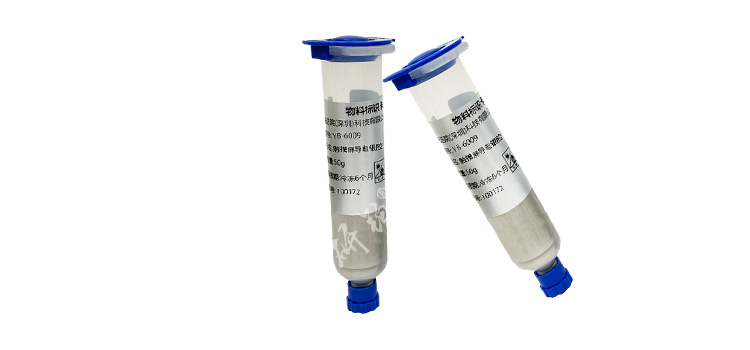

Hotline:0755-22277778
Tel:0755-22277778
Mobile:13826586185(Mr.Duan)
Fax:0755-22277776
E-mail:duanlian@xianjinyuan.cn
With the increasing application of third-generation semiconductor devices such as silicon carbide and gallium nitride in higher temperature, high pressure, and high frequency environments, corresponding packaging materials and structures, especially chip substrate interconnects, have put forward more stringent requirements in terms of thermal conductivity, conductivity, and reliability. Compared to traditional soldering alloys andConductive silver adhesiveThe conductivity and thermal conductivity of low-temperature sintered silver solder paste can be increased by three times, and the reliability can be increased by five times. The melting point of sintered silver is 961 ℃, and theoretically it can work reliably in high temperature environments below 700 ℃, meeting the reliable packaging application requirements of high temperature and high power density. It has been widely studied and applied.
In the process of sintering silver interconnect chips substrates, the most commonly used method to prevent oxidation of the copper or aluminum surface of substrates such as direct bond copper (DBC) or direct bond aluminum (DBA) substrates is electroplating or chemical nickel/gold or nickel/silver plating on the substrate surface. The nickel coating has stable performance, good corrosion resistance, low reaction and diffusion rate with tin based brazing materials, and can serve as a diffusion barrier layer to avoid or slow down the formation of a large number of intermetallic compounds; In addition, nickel plating has high stiffness, which can hinder the thermal mechanical deformation of DBC or DBA substrates during temperature shock, improving reliability. Compared to electroplated nickel layers, chemically plated nickel (phosphorus) layers have higher hardness, excellent wear resistance, good wetting and weldability to brazing materials, and are more widely used.
The commonly used soft solder materials in electronic packaging are lead containing solder or lead-free solder, with a melting point generally below 300 ℃. The junction temperature of power modules using soft solder technology is generally below 150 ℃. When applied to temperatures ranging from 175-200 ℃ or even above 200 ℃, the performance of the connection layer will deteriorate sharply, affecting the reliability of module operation.
The pressureless sintering silver technology is a new technique for preparing metal products, commonly used for manufacturing precision and electronic components. This technology utilizes the principle of electromagnetic sintering, without the need for powder or die casting materials, and directly performs sintering under air or oxygen conditions to obtain high-quality metal products.

The characteristics of pressureless sintering silver technology are as follows:
High precision: The pressureless sintered silver technology can produce high-precision metal products because the material itself does not require the process of powder pressing or die-casting.
Applicable scenarios: The pressureless sintered silver technology is suitable for preparing precision and electronic components, as the material itself does not require compression processes, thus achieving higher performance and accuracy.
Why use sintered silver technology:
In traditional power modules, the chip is soldered to the substrate through soft soldering, and the connection interface is usually a two-phase or three-phase alloy system. During temperature changes, the connection interface forms a metal compound layer to interconnect the chip, soft soldering alloy, and substrate. The commonly used soft solder materials in electronic packaging are lead containing solder or lead-free solder, with a melting point generally below 300 ℃. The junction temperature of power modules using soft solder technology is generally below 150 ℃. When applied to temperatures ranging from 175-200 ℃ or even above 200 ℃, the performance of the connection layer will deteriorate sharply, affecting the reliability of module operation.
In power devices, the heat flowing through the solder joints is very high, so more attention needs to be paid to the thermal performance of the connection between the chip and the frame, as well as its ability to handle high temperatures without reducing performance.
Maximum resistance of pressureless sintered silver:
The main problems encountered in the development of silver sintering technology are: the cost of nano silver used in silver sintering technology is much higher than that of solder paste, and the cost of silver paste increases with the decrease of silver particle size. At the same time, the precious metal coating on the copper layer of the substrate also increases the cost; Other silver sintering techniques require a certain amount of auxiliary pressure, and high auxiliary pressure can easily cause damage to the chip. The preheating and sintering process of pressureless silver sintering can last for more than 60 minutes, resulting in lower production efficiency; The connection layer obtained by silver sintering technology generally has internal voids at the micrometer or submicron level.
With the electronicization of automobiles, the practicality of EVs and HEVs, and the development of SiC/GaN devices, automotive power semiconductors are becoming more diversified. For example, not only individual power MOSFETs, but also IPDs (Intelligent Power Devices) that integrate control ICs (circuits) have emerged and their variety continues to increase. The power consumption of diversified on-board power semiconductors, especially those used in EV and HEV, continues to increase,
To address this issue, it is required to encapsulate the implementation
1) Low resistance
2) High heat dissipation
3) High density packaging.
The low-temperature pressureless sintering silver process is the key technology to solve this problem.
Pressure, temperature, and time are the main influencing factors on sintering quality, while coating type and quality, chip area size, and sintering atmosphere protection are also important factors to consider.
If you want to learn more about pressureless sintered silver related issues or product information, please contact us. We will solve and provide services for you:


Advanced Institute (Shenzhen) Technology Co., Ltd, © two thousand and twenty-onewww.leird.cn. All rights reservedGuangdong ICP No. 2021051947-1 © two thousand and twenty-onewww.xianjinyuan.cn. All rights reservedGuangdong ICP No. 2021051947-2